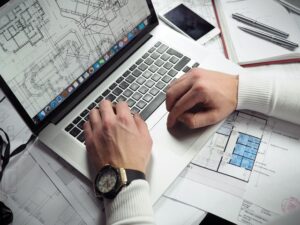
Excessive moisture inside buildings is common in high humidity areas. However, it can negatively impact your facility, personnel, and operations. That’s why it’s necessary to design a ventilation system tailored to your needs. If you operate in an area with high humidity levels, you need expert ventilation system design to reduce moisture and keep your interiors comfortable.
Too much moisture in your building can cause many negative effects. High humidity levels can encourage microorganisms like bacteria and mold to grow. In addition, moisture may condense on different surfaces in your building that may cause damage or create safety issues. A well-designed ventilation system can help you reduce these risks for your facility.
How We Can Design a Ventilation System for High Outdoor Humidity
When we design a ventilation system for your facility, our ventilation specialists take many factors into account, including the local climate. A ventilation system designed for cooler, dryer climates simply won’t be as effective if your geographical area faces high humidity and temperatures. Custom industrial ventilation systems address the specific challenges your facility faces for things like comfort and air quality.
The first step in designing a ventilation system specifically for your facility is performing a site evaluation. This allows our specialists to understand the local climate, building layout, problem areas, and air flow inside your building. This information helps us determine your ventilation system needs and which solutions will work best for your facility as we design your new ventilation system.
Components for Controlling Humidity in Industrial Ventilation Systems
If you face high humidity levels indoors, there may be several ways to help control the moisture. Some facilities may be able to use an air conditioning (AC) system to encourage condensation of high humidity. However, there is a limit to the relative humidity level that can be achieved with only an AC system. They can also be expensive to run from an energy consumption standpoint.
In some cases, your building may need dehumidifiers to help control excessive moisture in enclosed spaces. Dehumidifiers use either desiccants or refrigerants to extract humidity out of the air to keep relative humidity at target levels.
Fans may also play an important role in your industrial ventilation systems if your facility experiences high humidity levels. Fans can keep air moving to reduce the risk of condensation forming on building surfaces.
Adding heat is another way to control humidity. Raising the air temperature lowers the relative humidity. The combination of moving air with fans and increasing the air temperature with heaters is a very effective way to reduce the safety problem created by sweating floors.
Eldridge – Creating Successful Environments since 1946
Our specialists at Eldridge offer superior ventilation system design and installation for your building. We offer solutions for a wide variety of climates and industrial facilities. Our team is dedicated to creating successful environments for your people, processes, and products. We can help you address challenges for ventilation, industrial ventilation control, and ventilation noise. Contact us today to request a quote for your ventilation needs.
